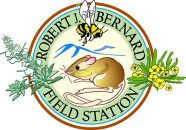Donnelly, Kira (2008)
The Efects of Population Size on the Genetic Structure of Phacelia distans (Hydrophyllaceae), a Common Native Plant.
Bachelor of Arts, Pomona College, Biology.
Advisor: Frances Hanzawa.
Vast amounts of native habitat around the Los Angeles area have been destroyed due to agricultural and urban development. As a result of this habitat loss, Los Angeles County has been identified as a hotspot for endangered species. A major effect of habitat loss is that it fragments remaining natural habitat and genetically isolates plant populations. This can create several small populations where there once was one, which can often have detrimental effects on population genetic structure. This study examined the role of population size in determining genetic structure of Phacelia distans (Hydrophyllaceae), a common, annual herbaceous plant native to Los Angeles County. I used allozyme gel electrophoresis to analyze the effect of population size on three measures of genetic variation, heterozygosity (Ho), alleles per locus (A), and polymorphism (P), as well as inbreeding coefficient (Fis) in five Claremont, CA, study populations ranging in size from 175 to over 80,000 individuals. I also calculated genetic differentiation (FST) between the five populations and analyzed if an isolation by distance pattern existed. The smallest two populations showed lower heterozygosity (H = 0.116 and 0.159) and higher inbreeding coefficients (Fis = 0.752 and 0.718) than the larger three populations (H = 0.238, 0.250, 0.220; Fis = 0.521, 0.556, 0.591). The smallest population showed higher genetic differentiation from the other populations than the four larger populations. There was no isolation by distance. The results of this study indicate that population size is a very important factor determining genetic structure of P. distans, although other factors such as time since isolation and location of fragments may also be influential. This study has implications for conservation of remaining coastal sage scrub habitat.
